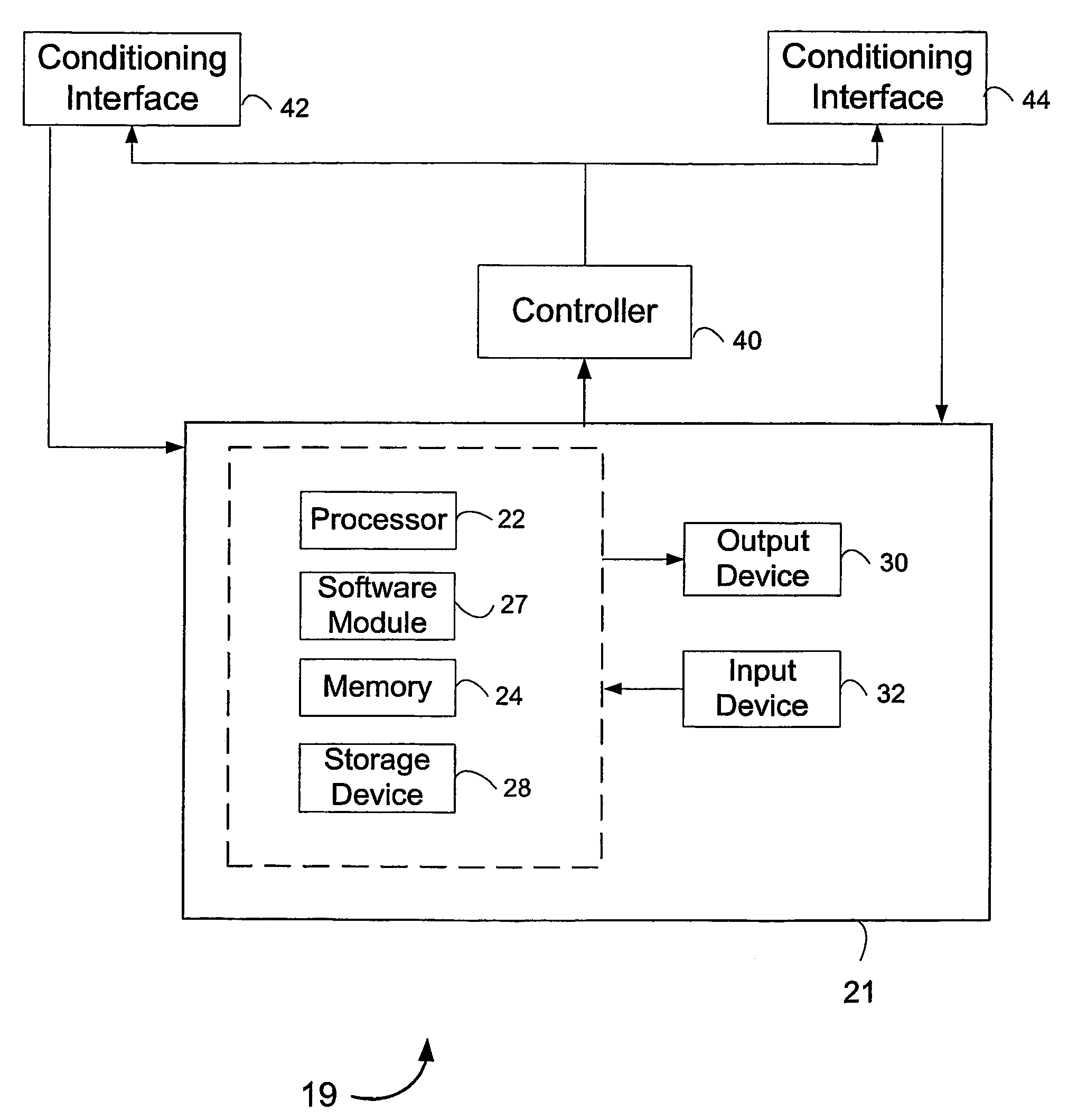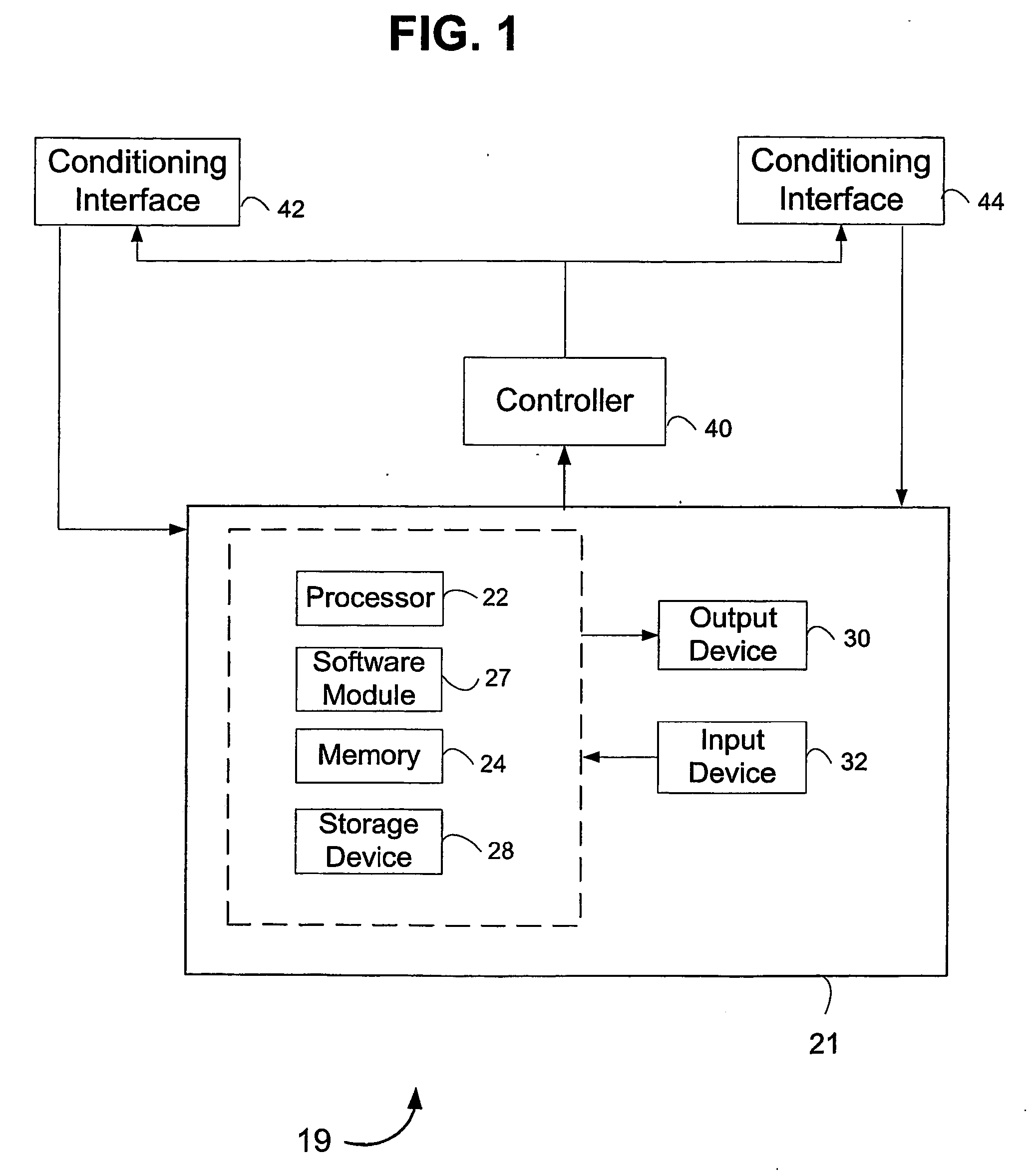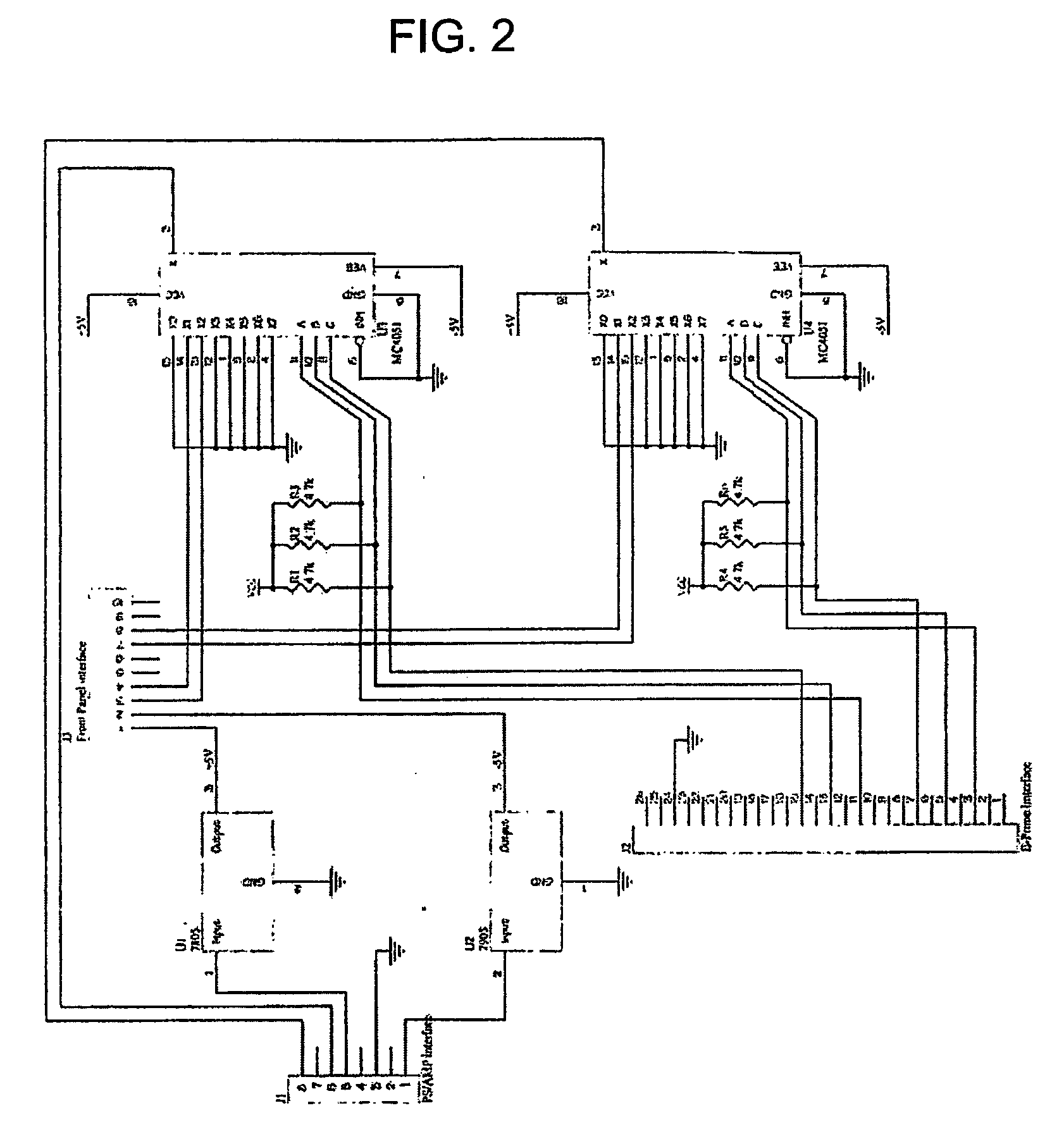System and method for identification of false statements
a false statement and identification system technology, applied in the field of false statement identification system and method, can solve problems such as difficulty in countermeasures to be used by subjects
- Summary
- Abstract
- Description
- Claims
- Application Information
AI Technical Summary
Benefits of technology
Problems solved by technology
Method used
Image
Examples
example 1
Differentiation of True and False Statements using Semantic Conditioning Experiment
[0050] Twelve male college students served as subjects. Following obtaining informed consent and the completion of several questionnaires, two conditioning interfaces were attached to the left and right index fingers of the subjects using hook and loop fasteners. These conditioning interfaces consisted of photoplethysmographs integrated into thermoelectric cooling devices These devices and their computer interface allowed control of the heating and cooling of the fingers during the presentation of text information on a computer screen.
[0051] The conditioning procedures were presented in two phases. The first phase required that subjects view a series of statements on the computer screen. The statements were presented in two parts such as “I don't like being” followed by the word “honored” and “I support” followed by the word “terrorism.” To assure that subjects were paying attention, four seconds af...
example 2
Software Code for Receiving and Analyzing Data from Conditioning Interfaces—Four Modules
[0053] A. Module 1—“pddVNewOddE.m” is a MATLAB R12 script to analyze data from conditioning and test series. This script provides the following functionality: (1) filters the total record waveforms for the first and second body part; (2) centers the data by subtracting the mean of the whole record; (3) equates the amplitudes of each channel by multiplying each channel by the inverse mean of the absolute value of that channel data; and (4) converts the record into z-scores. Data is recorded into individual trials, maintaining data from left and right channels and adding a difference channel that is the result of subtracting the left and right channels. A baseline correction maybe applied to the subtracted data channel.
[0054] Next, the script performs a separation of the epoched trials into sets by their trial type, as determined by the trigger channel data that has been maintained from the begin...
PUM
 Login to View More
Login to View More Abstract
Description
Claims
Application Information
 Login to View More
Login to View More - R&D
- Intellectual Property
- Life Sciences
- Materials
- Tech Scout
- Unparalleled Data Quality
- Higher Quality Content
- 60% Fewer Hallucinations
Browse by: Latest US Patents, China's latest patents, Technical Efficacy Thesaurus, Application Domain, Technology Topic, Popular Technical Reports.
© 2025 PatSnap. All rights reserved.Legal|Privacy policy|Modern Slavery Act Transparency Statement|Sitemap|About US| Contact US: help@patsnap.com



